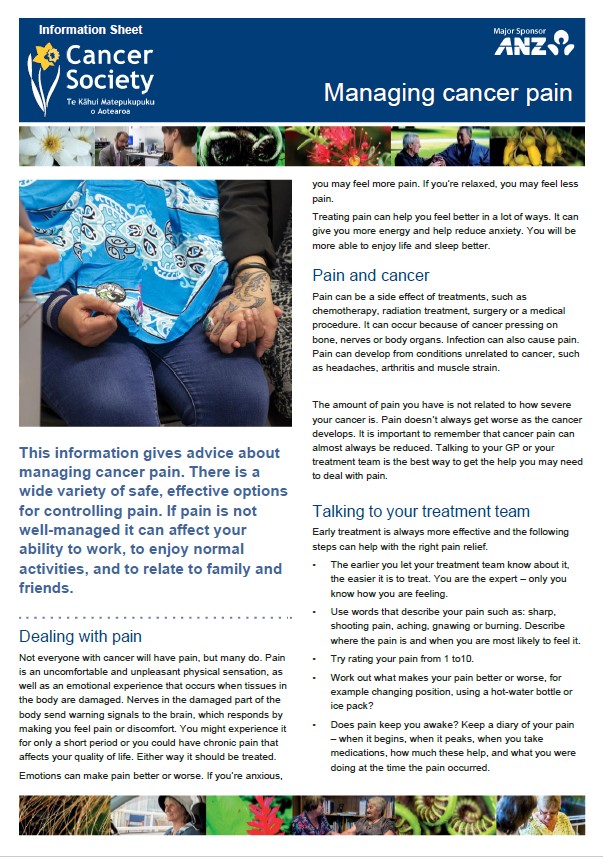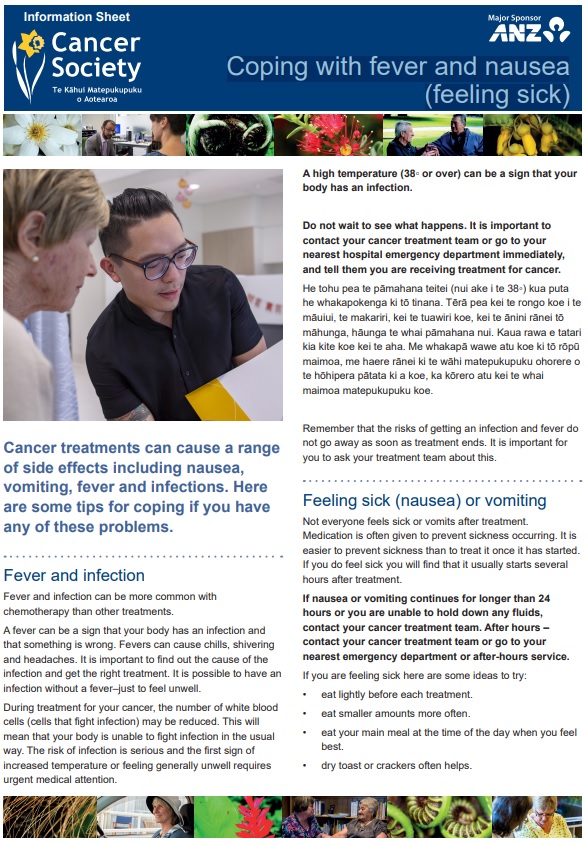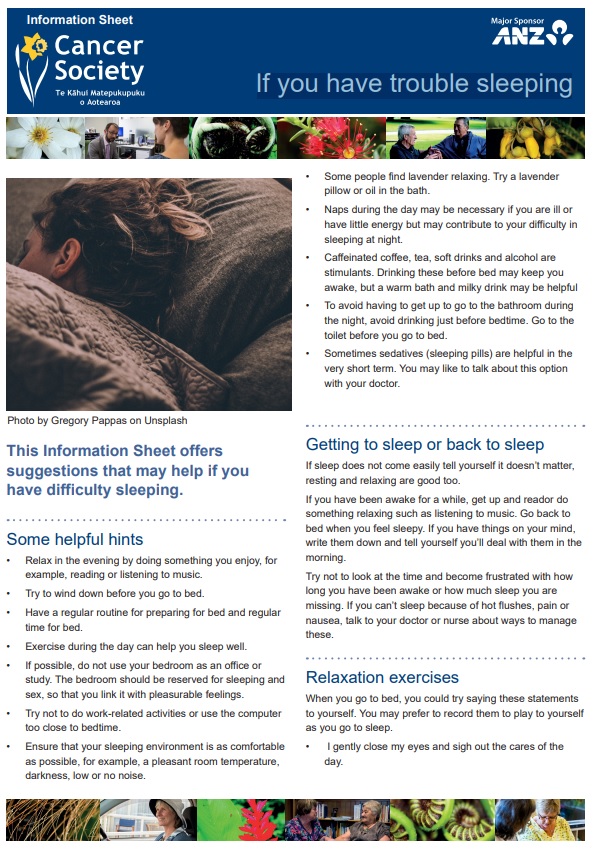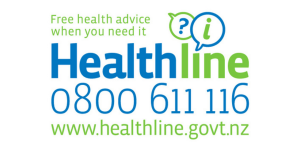Cancer pain
Key points about cancer pain
- People who have cancer don't always have pain.
- However, you may have pain when cancer puts pressure on bones, nerves or body organs.
- It can also be experienced after surgery, procedures or treatment.
- Infection can also cause pain.
- If you have pain, talk to your healthcare team as there are many ways it can be managed with medicines and non-medicine approaches.

Not everyone with cancer will have pain, but many people do. Pain is an uncomfortable and unpleasant physical sensation, as well as an emotional experience that occurs when tissues in your body are damaged. Nerves in the damaged part of the body send warning signals to your brain, which responds by making you feel pain or discomfort. Read more about nerve pain.
You might experience pain for only a short period, or you could have chronic (ongoing) pain that affects your quality of life. Either way it should be treated.
Dealing with pain
Emotions can make pain better or worse. If you’re anxious, you may feel more pain. If you’re relaxed, you may feel less pain.
Treating pain can help you feel better in a lot of ways. It can give you more energy and help reduce anxiety. You will be more able to enjoy life and sleep better. Talking to your healthcare provider or your cancer treatment team is the best way to get the help you may need to deal with pain.
- Pain can be a side effect of treatments (eg, chemotherapy or radiotherapy), surgery, or a medical procedure such as a biopsy or bone marrow test.
- It can occur because of a tumour pressing on bone, nerves or body organs.
- Infection can also cause pain.
The amount of pain you have isn’t related to how severe your cancer is. Pain doesn’t always get worse as the cancer develops. It's important to remember that cancer pain can almost always be reduced.
Being in pain affects your quality of life. When pain isn't treated properly, you may feel tired, depressed (have low mood), angry, worried, lonely or stressed. Pain can keep you from doing important, everyday things such as sleeping, eating and being active.
Cancer pain can be controlled in almost every situation. This doesn't mean that you have no pain, but it does mean that the pain stays at a level that you can bear. When pain is controlled, you can sleep and eat better, enjoy being with your family and friends, and continue with your work and hobbies.

Image credit: Canva
Early treatment is always more effective, and the following steps can help with the right pain relief.
- The earlier you let your treatment team know about your pain, the easier it is to treat. You are the expert – only you know how you are feeling.
- Use words that describe your pain such as sharp, shooting pain, aching, gnawing or burning. Describe where the pain is and when you are most likely to feel it. Read more about describing your pain.
- Try rating your pain from 1 to 10. Using a pain scale may help.
- Work out what makes your pain better or worse, for example does changing position, using a hot-water bottle or using an ice pack help?
- Does pain keep you awake? Keep a diary of your pain(external link) – when it begins, when it peaks, when you take medications, how much medication helps, and what you were doing at the time the pain occurred.
- If possible, take a friend or whānau member to appointments.
- If you’re prescribed pain medication, take it exactly as prescribed.
- Give your treatment team feedback on whether it works.
- Watch out for side effects (eg, constipation, nausea, drowsiness) and report them to your treatment team. All of these can be managed if your treatment team know about them.
- Know how to reach your treatment team after hours if you need them.
Your treatment team will aim to find the right combination of pain relief for you. They will work out how the pain is affecting you by doing a pain assessment.
If you have constant pain, you'll need to take pain relief medicines regularly to keep the pain under control. If you’re prescribed pain relief medicines, it’s important to take them at regular intervals. This is to make sure the medicines work as well as possible.
- Mild pain is often successfully treated with simple pain relievers including paracetamol, and nonsteroidal anti-inflammatory drugs (NSAIDs) such as ibuprofen, diclofenac and naproxen.
- For mild-to-moderate pain, or when simple pain relievers aren’t working you may be prescribed codeine or tramadol.
- Moderate-to-severe pain is usually treated with strong pain relief medicines (opioids), such as oxycodone, morphine or fentanyl.
Pain relief medicines have side effects and these should be discussed carefully with your treatment team. Read more about pain relief medicines in palliative care.
- There are other medicines that are often given with painkillers to help relieve pain. These include steroids, muscle relaxants and some medicines that are particularly effective if the pain is caused by a nerve being pressed on or damaged. For some types of pain, nerve-block and radiation treatment can be effective.
- Complementary therapies such as acupuncture, massage or relaxation techniques may help relieve pain. Read more about complementary therapies.
- Specialised equipment such as mattresses, or a V-pillow, a sheepskin or a cushion can be helpful if you’re spending a lot of time sitting or lying. Talk to your healthcare providers about what might help.
- Read more about non-medicine approaches to managing pain.
Apps reviewed by Healthify
You may find it useful to look at some pain management apps.
Cancer Society(external link) NZ
Brochures
Your cancer treatment team(external link) Cancer Society, NZ, 2019
Side effects – constipation, diarrhoea and wind(external link) Cancer Society, NZ, 2019
Coping with fever and nausea(external link) Cancer Society, NZ, 2019
Managing cancer pain [PDF, 479 KB] Cancer Society, NZ, 2025
If you have trouble sleeping(external link) Cancer Society, NZ, 2019
Questions you may want to ask(external link) Cancer Society, NZ, 2020 te reo Māori(external link), Samoan(external link), Cook Islands Māori(external link), Tongan(external link), Niuean(external link), Korean(external link), Gujurati(external link), Hindi(external link), Arabic(external link), Chinese simplified(external link), Chinese traditional(external link)
Managing cancer pain(external link) Macmillan Cancer Support, UK (Be aware that other countries have different contact numbers to those in New Zealand).
Apps
Brochures

Cancer Society, NZ, 2025

Cancer Society, NZ, 2019

Cancer Society, NZ, 2019
Credits: Cancer Society Te Kāhui Matepukupuku o Aotearoa
Reviewed by: Healthify editorial team. Healthify is brought to you by Health Navigator Charitable Trust.
Last reviewed:





